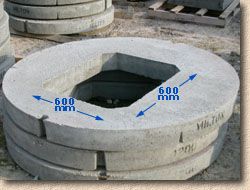hello,
I am trying to recommission an old well in the garden. It is 8 metres deep so I really, really, really don't want anyone falling down. It is in a small, sunken area so will have no vehicle/digger traffic. At the moment it is covered by rotting sleepers so something must be done anyway. The sleepers cover 1.8m x1.8m but the well is only 1.4m dia.
I don't really want a cheapo screwfix special, but don't want to spend £1.5k on a stainless job with neoprene seals, gas struts, etc. Watertightness would be good, as would single person lifting of cover without lifting gear.
does anyone have any suggestions as to products, and are there any building regs that apply?
thanks in advance for any help
I am trying to recommission an old well in the garden. It is 8 metres deep so I really, really, really don't want anyone falling down. It is in a small, sunken area so will have no vehicle/digger traffic. At the moment it is covered by rotting sleepers so something must be done anyway. The sleepers cover 1.8m x1.8m but the well is only 1.4m dia.
I don't really want a cheapo screwfix special, but don't want to spend £1.5k on a stainless job with neoprene seals, gas struts, etc. Watertightness would be good, as would single person lifting of cover without lifting gear.
does anyone have any suggestions as to products, and are there any building regs that apply?
thanks in advance for any help



